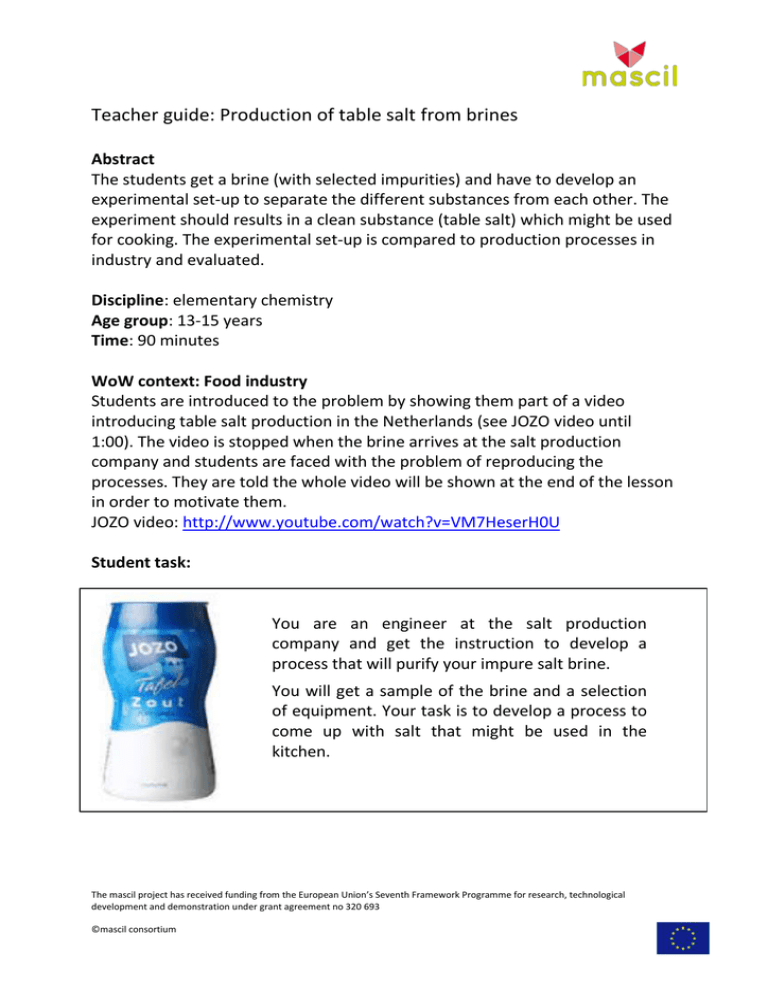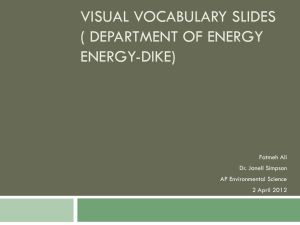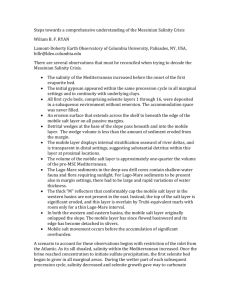WORD
advertisement

Teacher guide: Production of table salt from brines Abstract The students get a brine (with selected impurities) and have to develop an experimental set-up to separate the different substances from each other. The experiment should results in a clean substance (table salt) which might be used for cooking. The experimental set-up is compared to production processes in industry and evaluated. Discipline: elementary chemistry Age group: 13-15 years Time: 90 minutes WoW context: Food industry Students are introduced to the problem by showing them part of a video introducing table salt production in the Netherlands (see JOZO video until 1:00). The video is stopped when the brine arrives at the salt production company and students are faced with the problem of reproducing the processes. They are told the whole video will be shown at the end of the lesson in order to motivate them. JOZO video: http://www.youtube.com/watch?v=VM7HeserH0U Student task: You are an engineer at the salt production company and get the instruction to develop a process that will purify your impure salt brine. You will get a sample of the brine and a selection of equipment. Your task is to develop a process to come up with salt that might be used in the kitchen. The mascil project has received funding from the European Union’s Seventh Framework Programme for research, technological development and demonstration under grant agreement no 320 693 ©mascil consortium Sample brine: The impurities in the brine can be adapted to student competence in the classroom. Depending on the competence the following substances can be part of the sample brine: - sodium chloride (= table salt) - sand - stones - calcium sulfate (solubility very low) The choice of substances should be closely related to the students’ level of competence. For elementary students, physical processes would suffice to develop an experimental set-up and discuss results. For more advanced students calcium sulfate as an impurity can be included in order to discuss how is can be chemically removed from the brine. Here, the different processes of salt production (see literature) come into play and can be compared and evaluated to the one the students conducted. Equipment: Depending on the students’ experimental skills, the providing of equipment to conduct experiments can be more or less scaffolded. Good groups can get the instruction to select equipment of their choice while weaker groups should get a list of material they are allowed to use (but do not necessarily have to). A possible list can be: For your salt production process, you are allowed to use the following equipment: - Beakers Erlenmeyer flask Bunsen burner tripod wire gauze funnel filter paper … Wear your eye protection! If you think a different device would be useful, discuss your idea with the teacher! The mascil project has received funding from the European Union’s Seventh Framework Programme for research, technological development and demonstration under grant agreement no 320 693 ©mascil consortium Depending on student skills, the list can also be filled with superfluous equipment so that students have to choose the most appropriate set-up. Sample lesson plan (120 min) Time Activity 10 minutes Introduce the problem and show the first part of the video (until 1:00); students are allowed to ask questions and discuss their impression 5 minutes Students get their task and are introduced to the equipment they can use Safety issues are mentioned (e.g., goggles while using burner) 15 minutes Students plan the investigation 15 minutes 20 minutes 20 minutes 5 minutes 15 minutes 15 minutes HW Social mode Whole class Teacher Student groups Group discussion on the different experimental Whole group set-ups; is the set-up ideal and do all groups know how to go on? Students conduct their experiment Student groups Presenting process and findings Whole group Follow-up questions Watching the rest of the video Whole group Students discuss and evaluate their process to Student the one that was presented in the video groups Evaluation of processes Whole group What else can be done? Students are supposed to read a text on different production processes (solar salt etc.) Alternatives: Production of table salt from rock salt Abstract The students get ground rock salt (with selected impurities) and have to develop an experimental set-up to separate the different substances from each The mascil project has received funding from the European Union’s Seventh Framework Programme for research, technological development and demonstration under grant agreement no 320 693 ©mascil consortium other. The experiment should results in a clean substance (table salt) which might be used for cooking. WoW introduction: Students are introduced to the question by making them – as scientists responsible for helping a small village producing table salt. The way salt is industrially purified is only given as an application at the end (see chocolate chip cookie). Literature: Westphal, G. et al. (2010). Sodium Chloride. In: Ullmann’s Encyclopedia of Industrial Chemistry. Wiley-online. Sedivy, V. M. (1996). Purification of salt for chemical and human consumption. Received from http://www.fisme.science.uu.nl/toepassingen/28121/documents/overview_salt_prod uction_salex.pdf (16 January 2014). Other sources: JOZO image on student task retrieved from http://www.ah.nl/appie/producten/soepen-conserven-sauzensmaakmakers/kruiden-en-specerijen/merk=Jozo/zout The mascil project has received funding from the European Union’s Seventh Framework Programme for research, technological development and demonstration under grant agreement no 320 693 ©mascil consortium






